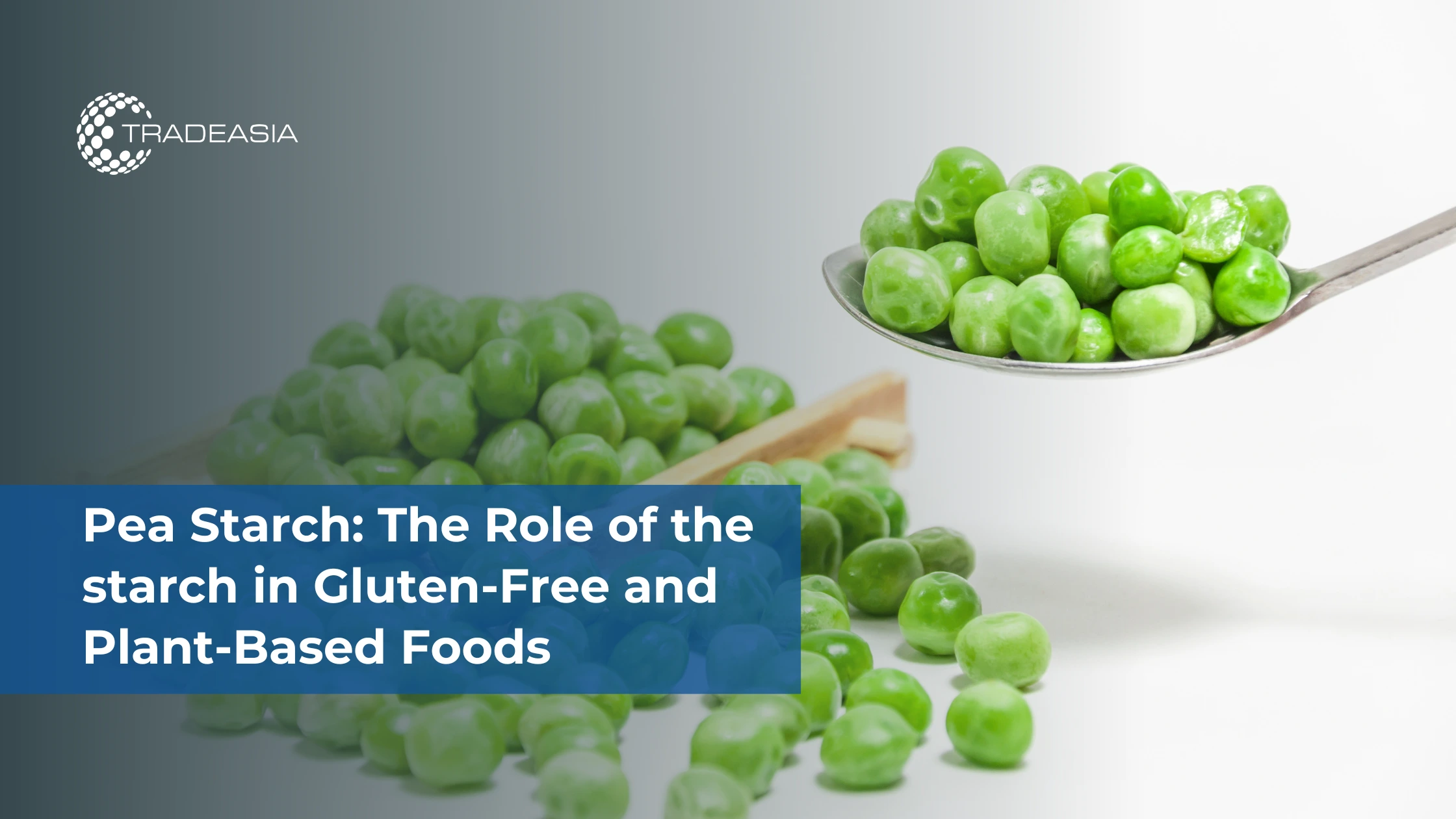Introduction
Starches are everywhere in our diets, but not all starches are created equal. Among them, pea starch has quietly become one of the most versatile ingredients for food manufacturers. Extracted from yellow peas, this starch is prized for its high amylose content, strong gelling ability, and clean-label appeal.
Most consumers don’t know it’s there, but in food factories, pea starch is the difference between bread that collapses and bread that holds its shape. For B2B buyers, understanding pea starch is no longer optional—it’s a competitive advantage.
According to Mordor Intelligence, the global pea starch market is on track for strong growth as more companies shift to natural, plant-based ingredients.
Technical Role of Pea Starch in Food & Bakery
Dough Performance and Structure
Walk into any large-scale bakery, and you’ll see dough being mixed in batches big enough to feed a city block. In such environments, consistency matters. Pea starch is often added to strengthen the dough, improve elasticity, and give the finished loaf a uniform crumb structure. Bakers report fewer collapses during proofing, and the bread stays softer for longer.
Related resource: Another Starch Products — Food Aditives Asia
Gluten-Free Innovation
The gluten-free trend isn’t slowing down, but formulating without wheat is notoriously tricky. Here, pea starch plays a critical role. Its ability to mimic gluten-like networks helps give gluten-free bread more volume and better mouthfeel.
A study in Food Hydrocolloids confirmed that pea starch improves softness and moisture in gluten-free baked goods—two pain points that consumers often complain about. For manufacturers, this means fewer rejected batches and happier customers.
Stabilizing and Thickening Properties
Beyond the bakery aisle, pea starch works quietly in a wide range of foods. In dairy alternatives, it prevents plant-based yogurt from separating. In sauces and soups, it provides thickness without the heavy taste that some starches leave behind. And in meat analogs, it improves binding, so vegan burgers hold together on the grill.
The FAO Codex Alimentarius classifies starches like pea starch as safe and widely used in food processing.
Gut Health and Resistant Starch Benefits
Resistant Starch Formation
One of the nutritional advantages of pea starch is its high resistant starch (RS) content. Unlike normal starch, resistant starch isn’t fully digested in the small intestine. Instead, it travels to the colon, where it behaves more like fiber.
Blood Sugar and Satiety
Why does this matter? Resistant starch helps regulate blood sugar after meals. It slows digestion, reduces post-meal spikes, and supports insulin sensitivity. For food developers, this opens the door to diabetic-friendly and low-glycemic products. It also contributes to satiety—consumers feel fuller for longer, which is a valuable selling point for weight-management foods.
Prebiotic Functions for Digestion
Another benefit: resistant starch feeds beneficial gut bacteria. This prebiotic effect improves gut microbiome balance, which is increasingly linked to overall health. The European Food Safety Authority (EFSA) has recognized resistant starch for its role in supporting digestive function.
Further reading: Food Additives Asia – Starch Applications
Future Innovations and Opportunities
The future of pea starch isn’t limited to food. Researchers are experimenting with:
-
Biodegradable packaging → reducing plastic waste
-
Meat alternatives → better texture and bite in plant-based proteins
-
Functional health foods → products enriched with resistant starch for gut health
Sourcing Insights for B2B Buyers
Choosing pea starch isn’t just about function—it’s about trust. Buyers should look for suppliers who provide:
-
Food-grade certifications (ISO, HACCP, Halal, Kosher)
-
Certificates of Analysis (CoA) to verify quality
-
Proven supply chains that ensure consistency
Explore sourcing options here: Pea Starch Suppliers – Food Additives Asia
Conclusion
Pea starch has moved from being an overlooked starch to a strategic ingredient that bridges functionality, nutrition, and consumer trends.
For bakeries, it means more reliable dough and softer bread. For health-focused brands, it’s a natural way to boost resistant starch and support gut health. And for the wider industry, it’s a key player in the clean-label and plant-based movement.
For B2B buyers, now is the time to explore pea starch—not just as an additive, but as an opportunity to lead in innovation and meet tomorrow’s consumer demands.

Leave a Comment